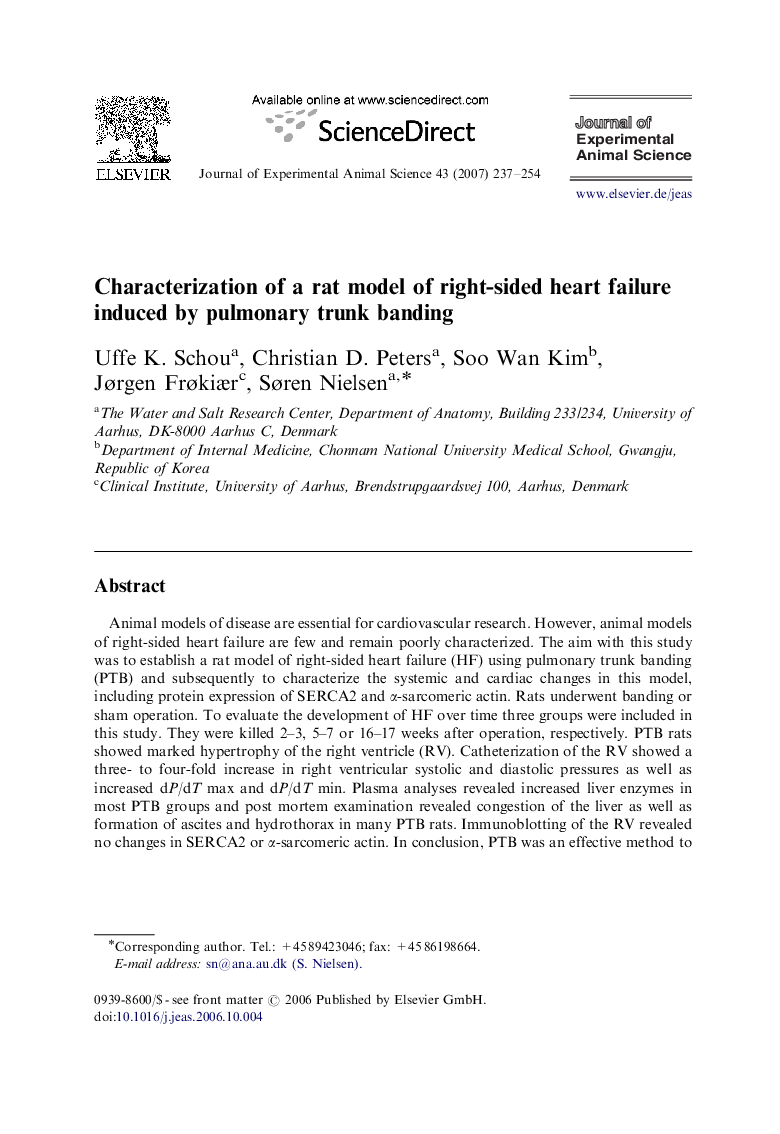| Article ID | Journal | Published Year | Pages | File Type |
|---|---|---|---|---|
| 2446811 | Journal of Experimental Animal Science | 2007 | 18 Pages |
Animal models of disease are essential for cardiovascular research. However, animal models of right-sided heart failure are few and remain poorly characterized. The aim with this study was to establish a rat model of right-sided heart failure (HF) using pulmonary trunk banding (PTB) and subsequently to characterize the systemic and cardiac changes in this model, including protein expression of SERCA2 and α-sarcomeric actin. Rats underwent banding or sham operation. To evaluate the development of HF over time three groups were included in this study. They were killed 2–3, 5–7 or 16–17 weeks after operation, respectively. PTB rats showed marked hypertrophy of the right ventricle (RV). Catheterization of the RV showed a three- to four-fold increase in right ventricular systolic and diastolic pressures as well as increased dP/dT max and dP/dT min. Plasma analyses revealed increased liver enzymes in most PTB groups and post mortem examination revealed congestion of the liver as well as formation of ascites and hydrothorax in many PTB rats. Immunoblotting of the RV revealed no changes in SERCA2 or α-sarcomeric actin. In conclusion, PTB was an effective method to induce right-sided HF. The presence of HF was confirmed by severe signs of backward failure in conjunction with markedly elevated RV pressures and reduced RV ejection fraction (EF).
